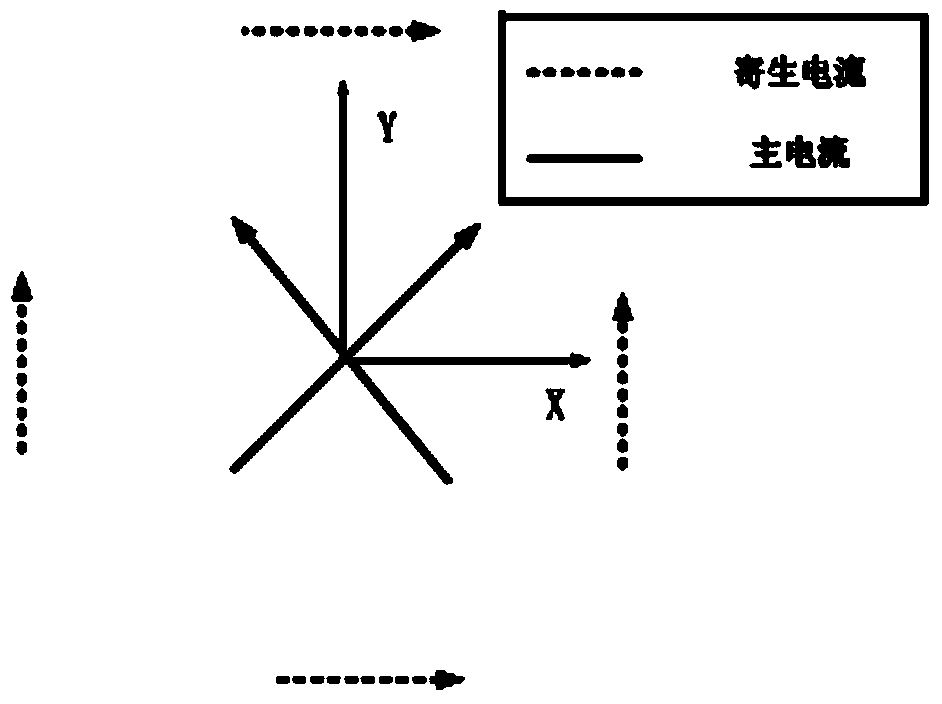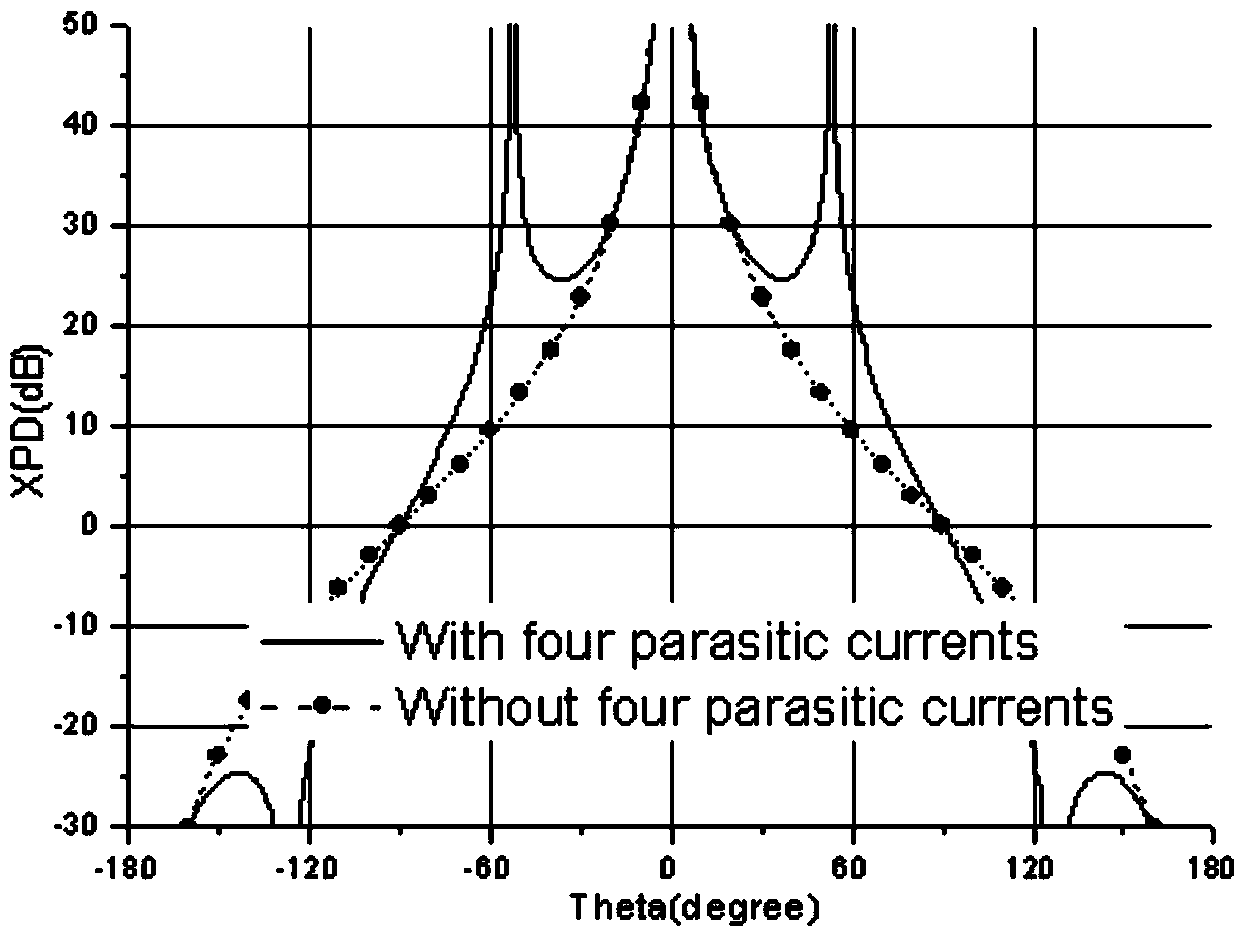Improved dual-polarization base station antenna and method for improving cross-polarization ratio
A base station antenna and dual-polarization technology, which is applied in the field of improved dual-polarization base station antennas, can solve problems such as lack of analysis and guidance design, and achieve the effect of improving the cross-polarization ratio
- Summary
- Abstract
- Description
- Claims
- Application Information
AI Technical Summary
Problems solved by technology
Method used
Image
Examples
Embodiment 1
[0039] An improved dual-polarized base station antenna, including a metal floor, a radiator, a microstrip substrate, and four metal strips, the four metal strips realize four parasitic currents, and the radiator and the four metal strips are printed on the microstrip On the substrate, four metal strips are made of copper skin, with a length of 85 mm and a width of 1 mm. The radiator and the square formed by the four metal strips are on the same horizontal plane. Adjacent metal strips do not touch, and the radiator is located in the center. point, the center frequency of the antenna in this embodiment is 2.2 GHz.
[0040] Figure 4 is the standing wave ratio of the antenna simulation and test. In the 1.71-2.69 frequency band, VSWR Figure 5 is |S21|, which means that the isolation between the two ports is above 25dB. Figure 6(a)-Figure 6(f) is the radiation pattern. Table 4 and Table 5 are the summary of the radiation characteristics of the first port 4 and the second port 5...
PUM
 Login to View More
Login to View More Abstract
Description
Claims
Application Information
 Login to View More
Login to View More - R&D
- Intellectual Property
- Life Sciences
- Materials
- Tech Scout
- Unparalleled Data Quality
- Higher Quality Content
- 60% Fewer Hallucinations
Browse by: Latest US Patents, China's latest patents, Technical Efficacy Thesaurus, Application Domain, Technology Topic, Popular Technical Reports.
© 2025 PatSnap. All rights reserved.Legal|Privacy policy|Modern Slavery Act Transparency Statement|Sitemap|About US| Contact US: help@patsnap.com



